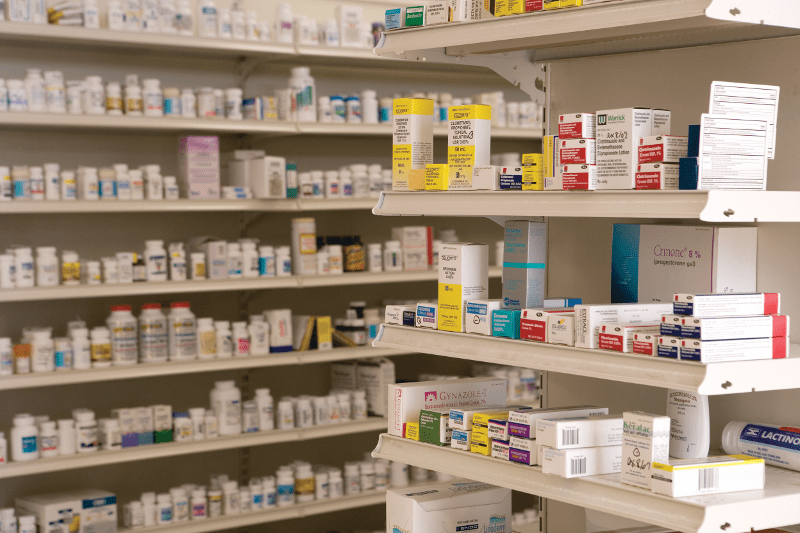Independent Pharmacists Operate at the Top of their License

Before the pandemic, pharmacists began focusing more on clinical care, and the impacts of COVID-19 on the pharmacy only expedited this process. Pharmacists are now encouraged and empowered to operate at the top of their license, allowing pharmacies to expand locally available services while better tending to the needs of vulnerable patient populations.
Why Pharmacists are Critical to Patient Care
As the physician shortage worsens, many populations exist within areas devoid of access to essential medical care services, predominantly rural regions of larger states. A staggering 13% of the U.S. population—44 million people, including some 10 million Medicare Part B enrollees—live in physician deserts, defined as places in which there is less than one primary care physician (PCP) for every 3,500 people. The current shortage is widely estimated at 15,000 PCPs. Multiple studies have forecasted that the U.S. will face a shortage of more than 139,000 physicians overall by 2030. Community pharmacies staffed with pharmacists operating at the top of their license can provide vital services to these areas, delivering clinical services to patients who often have no other easily accessible form of health care.
The National Association of Chain Drug Stores (NACDS) found that roughly 90% of the American people live within five miles of one of a NACDS member company stores, making pharmacists the most accessible health care professionals in the country.
Patients visit a pharmacy an average of 35 times per year compared to just four visits to medical providers. The typical pharmacist spends just 10% of their working day with patients; however, a key finding in AmerisourceBergen’s Pharmacy Check-Up survey indicated they want to spend more time with them; up to 74% for chain pharmacists and 60% for health system and specialty pharmacists.
Nearly two out of three Americans place pharmacists at or near the top of their list of most trusted professionals, almost on the same level as doctors and nurses, making pharmacists an excellent choice for delivering primary health services.
Pharmacist Capabilities When Practicing at the top of Licensure
Pharmacists can do much more than simply dispensing. After years of rigorous education, they have advanced degrees and considerable experience. If allowed to practice at the top of their license, pharmacists can diagnose, prescribe, and treat many common health conditions.
The shift to a concentrated focus on overall patient care is already in motion. A total of four out of five pharmacies now provide some form of patient care services (PCS) above and beyond filling prescriptions and delivering counseling. In 2019, more than half of U.S. pharmacists contributed a significant portion of their time to patient care service, up from 40% in 2014.
Having pharmacists contributing directly to patient care can be critical to correct medication usage and compliance. For every dollar in medication cost, there is an additional dollar cost in treatment failure, including medication-related injuries that result from poor drug selection, poor medication adherence, and overutilization. Medication-related issues cost nearly $9 billion yearly.
Pharmacists practicing at the top of licensure can help reduce these costs, especially since they have more contact, on average, with patients than doctors do, seeing them more frequently and building stronger relationships.
Advances in remote consulting and prescribing constitute a significant driver for top of licensure practice by pharmacists. One study noted that once pharmacies implemented telehealth services, the number of clinical pharmacy encounters increased by 32%, and the number of unique patients seen by pharmacists increased by 12%.
Main areas in which pharmacists can leverage top of licensure practice:
- Medication therapy management
- Management of chronic conditions, including care for people living with diabetes, hypertension, and high cholesterol
- Point of care testing and vaccination, such as acute infection testing (strep tests, PCR, antigen), flu/COVID vaccinations, chronic disease screening, and chronic disease monitoring
- Limited prescription with adherence to the legislation and regulations of their geographical region
Legislation Affecting Top of Licensure Practice
Medicare does not recognize pharmacists as eligible providers, rendering pharmacists unable to bill directly for most patient care services (with a few exceptions). Similarly, Medicaid only reimburses pharmacists in 14 states for extremely limited PCS, including medication therapy management, vaccine administration, and counseling for smoking cessation. For pharmacists to deliver services beyond their dispensing role, Medicare, Medicaid, and commercial insurers must recognize pharmacists as eligible reimbursable providers.
One currently available path to increased revenues for community pharmacies is participation in clinical service programs. Pharmacists practicing at the top of their license can potentially get paid by payer-funded clinical programs and earn income for completing clinical services.
There are limitations on what pharmacists can do, but changes are happening slowly. New legislation makes headway, allowing pharmacists to participate in limited prescribing and provide clinical services under tightly controlled circumstances.
All 50 states currently allow some form of Collaborative Practice Agreement; however, 33 states have additional mandates attached to the permission. In 2019 alone, 34 states introduced more than 100 pieces of legislation to enhance pharmacists’ scope of practice.
These include expanding statewide protocols that allow pharmacists to dispense specific medications and medical tests without a formalized prescriber relationship and growing standing orders authorizing pharmacists to carry out a physician order for a particular population without a prescription.
Benefits of Top of Licensure Pharmacist Practice
- Providing clinical services can:
- Add new revenue streams
- Improve patient outcomes
- Boost patient loyalty
- Help fight burnout for pharmacists
- Help pharmacists feel more fulfilled in their career
As more pharmacists expand their practice parameters, patient communities trapped in physician deserts can benefit from proactive and preventive care, reducing cost burdens and relieving pressure on already stressed community healthcare centers.
Outcomes® supports independent pharmacists operating at the top of their license by providing the software and tools needed to carry out clinical services. Currently, Outcomes has the only solutions with workflow-integrated clinical service opportunities. Contact us today for more information on the potential unlocked by Outcomes for pharmacies and pharmacists.






